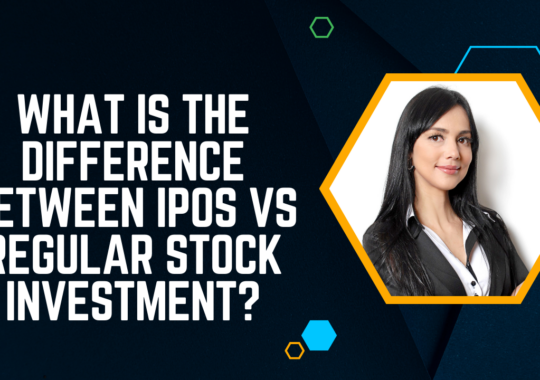Investing in IT mutual funds during a period when IT stocks are experiencing a decline requires careful consideration. While short-term market fluctuations can be unsettling, it’s crucial to assess the long-term prospects of the IT sector. Analyze the underlying fundamentals of the mutual funds you hold, including the quality of the companies in the portfolio, their financial health, and future growth potential. Additionally, consult with a financial advisor to evaluate your investment goals, risk tolerance, and the broader market conditions before making any investment decisions.
Introduction: Evaluating Investment Options
Investing in the right mutual funds requires careful consideration and analysis, especially during periods when IT stocks are experiencing a decline. This article aims to help you make informed decisions about whether to continue investing in IT mutual funds amidst crumbling IT stocks. By evaluating various factors, including the current state of IT stocks, the long-term prospects of the IT sector, and the quality of the mutual funds, you can better understand the potential risks and rewards associated with your investment. It’s important to conduct thorough research and seek professional advice to maximize your investment potential.
Evaluating the Quality of IT Mutual Funds
When considering whether to continue investing in IT mutual funds as IT stocks crumble, one crucial factor to assess is the quality of the mutual funds themselves. Here are some key points to consider:
1. Fund Manager Expertise: Research the track record and experience of the fund manager. Look for their ability to navigate market volatility and deliver consistent returns over time.
2. Fund Performance: Evaluate the fund’s historical performance, both in comparison to its benchmark index and other similar funds. Analyze its performance during different market conditions, including periods of IT sector downturns.
3. Fund Objectives and Strategy: Understand the investment objectives and strategy of the mutual fund. Does it align with your investment goals? Consider whether the fund focuses on a specific segment of the IT sector or has a broader approach.
4. Diversification: Assess the fund’s diversification across IT stocks. A well-diversified fund reduces the impact of individual stock declines and spreads risk across multiple holdings.
5. Expense Ratio: Take into account the expense ratio, which represents the fees and expenses charged by the mutual fund. Lower expense ratios can have a positive impact on your overall returns.
By thoroughly evaluating these factors, you can gain a better understanding of the quality of the IT mutual funds you hold or are considering investing in. It’s important to remember that past performance is not indicative of future results, and conducting ongoing research and monitoring the fund’s performance is crucial for making informed investment decisions.
Examining Future Growth Potential
Assessing the future growth potential of IT mutual funds is essential when deciding whether to continue investing in them amidst a crumbling IT stocks scenario. Here are key considerations to evaluate:
1. Industry Trends: Study the emerging trends within the IT sector. Identify areas that are poised for growth, such as cloud computing, artificial intelligence, cybersecurity, or e-commerce. Analyze how well the mutual fund aligns with these trends and if it has exposure to companies driving innovation in these areas.
2. Company Analysis: Evaluate the companies held within the mutual fund’s portfolio. Look for financially healthy companies with strong fundamentals, robust business models, and a competitive advantage in their respective markets. Assess their growth prospects, revenue streams, and ability to adapt to changing market dynamics.
3. Market Position: Consider the market position of the companies in the mutual fund. Are they leaders or disruptors in their industry? Assess their ability to gain market share, expand into new markets, or maintain a competitive edge. Companies with a strong market position are more likely to experience sustained growth.
4. Revenue and Earnings Growth: Analyze historical revenue and earnings growth of the companies in the mutual fund. Look for consistent growth patterns and assess if they have the potential to continue expanding in the future. Consider factors such as innovation, customer demand, and scalability of their business models.
5. Economic Factors: Evaluate broader economic factors that can influence the IT sector’s growth, such as GDP growth, government policies, regulatory changes, and global market conditions. Consider how these factors may impact the mutual fund’s holdings and their growth potential.
Remember that assessing future growth potential involves inherent uncertainties, and there are risks associated with investing in any market. It’s crucial to conduct thorough research, diversify your investments, and seek professional advice to make well-informed decisions based on your risk tolerance and investment objectives.
Consultation with a Financial Advisor
When considering whether to continue investing in IT mutual funds as IT stocks crumble, consulting with a financial advisor is a wise decision. Here’s why:
1. Expert Guidance: Financial advisors are professionals with expertise in investment management and market analysis. They can provide valuable insights and guidance tailored to your specific financial situation, risk tolerance, and investment goals.
2. Holistic Financial Planning: A financial advisor can help you assess your overall financial situation and align your investment decisions with your broader financial goals. They can provide guidance on diversification, asset allocation, and risk management, taking into account your entire investment portfolio and other financial considerations.
3. Market Insights and Research: Financial advisors have access to a wide range of market research, industry reports, and economic analysis. They can provide you with up-to-date information and help you interpret market trends, making informed investment decisions.
4. Risk Management: During times of market volatility, a financial advisor can help you evaluate the risks associated with investing in IT mutual funds and provide strategies to mitigate those risks. They can help you set realistic expectations and create a risk management plan that aligns with your risk tolerance.
5. Behavioral Coaching: One of the key roles of a financial advisor is to provide behavioral coaching, helping you stay disciplined and avoid emotional decision-making. They can provide objective advice during market downturns, preventing impulsive investment choices that could harm your long-term financial goals.
Ultimately, consulting with a financial advisor adds a professional perspective to your investment decisions. They can provide personalized advice, support, and guidance to help you navigate market uncertainties and make well-informed choices based on your unique financial circumstances.
Also Read:
- Investment Taxation: Understanding Capital Gains, Dividends, and More
- The Impact Of Inflation On Investments
- What is the safest way to reduce investment risk?
- What are the major four assets of an investor portfolio?




